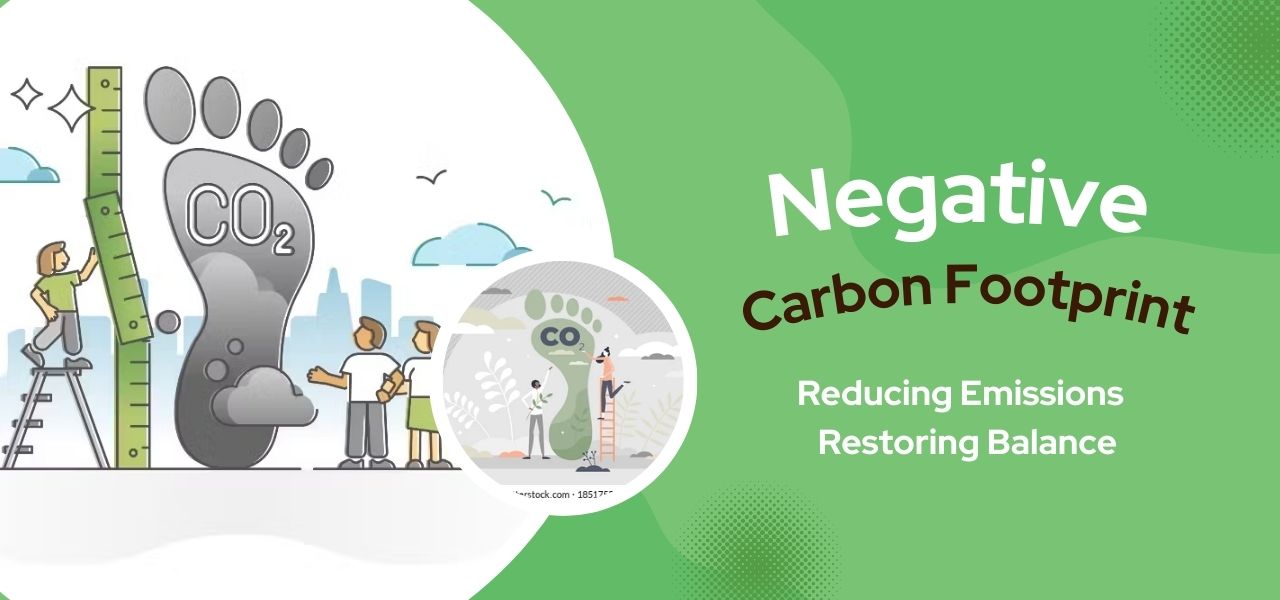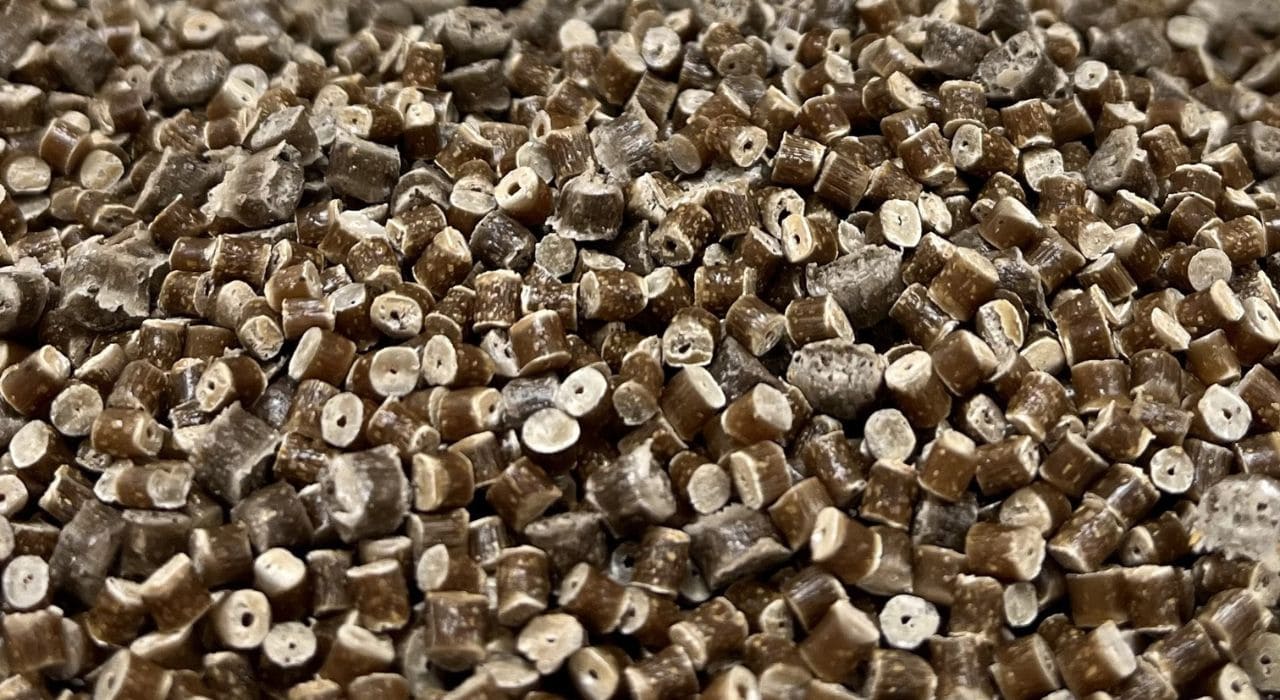Negative Carbon Footprint: Reducing Emissions and Restoring Balance

In the fight against climate change, the concept of achieving a negative carbon footprint has emerged as a powerful solution. A negative carbon footprint goes beyond simply reducing emissions; it involves actively removing more carbon dioxide from the atmosphere than is being released. This ambitious goal holds immense potential for restoring the balance of our planet's carbon levels and mitigating the impacts of global warming.
In this blog, we will explore what is negative carbon footprint, the potential and the new solution to achieve it. Join us as we delve into the world of carbon capture and sustainable practices that pave the way for a more sustainable future.
How negative carbon footprint differs from carbon neutrality
When it comes to addressing climate change, two terms that often come up are "negative carbon footprint" and "carbon neutrality." While they are related concepts, there are distinct differences between the two. Understanding these differences is crucial in developing effective strategies for combating climate change.
A negative carbon footprint goes beyond achieving carbon neutrality. It means actively removing more carbon dioxide from the atmosphere than is being emitted. In other words, it involves taking concrete actions to reduce and offset carbon emissions to a point where the overall impact becomes negative. This is a significant step towards reversing the effects of climate change.
On the other hand, carbon neutrality refers to achieving a balance between the amount of carbon emissions produced and the amount of carbon removed or offset. It means that the net carbon emissions from a particular entity, such as a business or an individual, are zero. This is typically achieved by reducing emissions as much as possible and then offsetting the remaining emissions through carbon offset projects.
The key distinction between negative carbon footprint and carbon neutrality lies in the approach towards carbon reduction. While carbon neutrality focuses on achieving a balance, negative carbon footprint goes a step further by actively removing carbon from the atmosphere. This can be achieved through various innovative technologies and practices that capture and store carbon, such as carbon capture and storage (CCS) systems, reforestation projects, or the use of carbon-negative materials.
Having a negative carbon footprint offers several advantages in the fight against climate change. It helps to actively combat rising carbon dioxide levels in the atmosphere and contributes to the overall reduction of greenhouse gas concentrations. Additionally, it provides an opportunity to restore ecosystems, promote sustainable practices, and drive innovation in carbon capture and removal technologies.
By striving for a negative carbon footprint, businesses, organizations, and individuals can demonstrate a strong commitment to environmental sustainability. They can take proactive steps to reduce their impact on the climate and contribute to the broader goal of achieving a more sustainable and resilient future.

In summary, while carbon neutrality is an important milestone, aiming for a negative carbon footprint takes sustainability efforts to the next level. By actively removing carbon dioxide from the atmosphere, we can make a significant difference in mitigating climate change and creating a healthier planet for future generations.
Potential for Attaining Negative Carbon Footprint
The concept of achieving a negative carbon footprint has gained significant attention in recent years as the urgency to combat climate change grows. A negative carbon footprint refers to the state where an individual, organization, or even a nation removes more carbon dioxide from the atmosphere than it emits. This is achieved through various actions and initiatives aimed at reducing greenhouse gas emissions and actively removing carbon dioxide from the atmosphere.
The potential for attaining a negative carbon footprint is indeed within our reach. With the right actions and concerted efforts, we have the ability to make a positive impact on the environment and mitigate the effects of climate change. In fact, numerous studies and statistics highlight the positive outcomes that can be achieved through these endeavors.
One of the most promising aspects of striving for a negative carbon footprint is the positive impact it can have on the environment. By actively removing carbon dioxide from the atmosphere, we can effectively counterbalance the greenhouse gas emissions and contribute to the overall reduction of atmospheric carbon levels. This has the potential to slow down the progression of climate change and minimize its adverse effects on the planet.
Moreover, studies and research have shown encouraging results when it comes to the potential for attaining a negative carbon footprint. Positive statistics indicate that with the right actions and strategies in place, it is indeed possible to achieve this ambitious goal. For instance, innovative carbon capture technologies and nature-based solutions, such as reforestation and sustainable land management, have demonstrated their effectiveness in removing carbon dioxide from the atmosphere and storing it for the long term.
Furthermore, renewable energy sources play a crucial role in the potential for attaining a negative carbon footprint. The widespread adoption of clean and sustainable energy technologies, such as solar and wind power, can significantly reduce greenhouse gas emissions from the energy sector. By transitioning away from fossil fuels and embracing renewable energy on a large scale, we can actively contribute to the overall goal of achieving a negative carbon footprint.
It is important to note that achieving a negative carbon footprint requires collective effort from individuals, businesses, and governments. By implementing sustainable practices, adopting green technologies, and promoting renewable energy, we can make significant strides towards this ambitious goal. Additionally, investing in research and innovation in carbon capture and storage technologies can further enhance our ability to achieve negative carbon emissions.
New Solutions for Achieving Negative Carbon Footprint
Reducing our carbon footprint has become increasingly important in the fight against climate change. One innovative solution that has gained significant attention is the use of plant-based plastic, such as the one produced by AirX. This groundbreaking material not only offers a wide range of applications but also has the potential to contribute to achieving a negative carbon footprint.

Plant-based plastic, in contrast to conventional petroleum-based plastic, is made from renewable sources such as plant fibers or by-products like coffee grounds. The manufacturing of this type of plastic requires considerably less carbon dioxide from the atmosphere, resulting in a negative product carbon footprint.
By utilizing plant-based plastic, businesses and individuals can make a significant impact in reducing their carbon footprint. This sustainable alternative provides a way to address the environmental concerns associated with traditional plastic production, such as greenhouse gas emissions and plastic waste accumulation.
One key advantage of plant-based plastic is its ability to capture and sequester carbon dioxide. As plants grow, they naturally absorb carbon dioxide from the atmosphere through photosynthesis. By using plant-based materials in the production of plastic, this carbon is effectively stored within the material itself, reducing the overall carbon footprint.
Furthermore, the use of plant-based plastic also helps to mitigate the environmental impact of waste management. Traditional plastic often ends up in landfills or as litter, contributing to carbon emissions and pollution. In contrast, plant-based plastic can be biodegradable or compostable, providing a more sustainable end-of-life solution and minimizing negative environmental consequences.
AirX, a leading producer of plant-based plastic, has demonstrated the feasibility and effectiveness of this innovative material in achieving a negative carbon footprint. By utilizing by-products like coffee grounds as raw materials, AirX captures carbon that would otherwise be released into the atmosphere and uses it to create a versatile and eco-friendly alternative.
>>> Learn more: Product Carbon Footprint: Strategies for Sustainable Manufacturing
Contact us
AirX is the world's first carbon-negative bio-material made from coffee grounds manufacturer.
We specialize in producing bio-based composites using recycled carbohydrates derived from by-products such as coffee grounds, coconut husk, husk, and bamboo. Our goal is to promote sustainability through the use of eco-friendly materials.
We are always here to help and provide the best service possible. If you have any questions or would like to receive advice and feedback directly from our sales staff, please do not hesitate to contact us. You can reach us through:
- Whatsapp: +84 969 742 950
- Email: [email protected]
We look forward to hearing from you!

